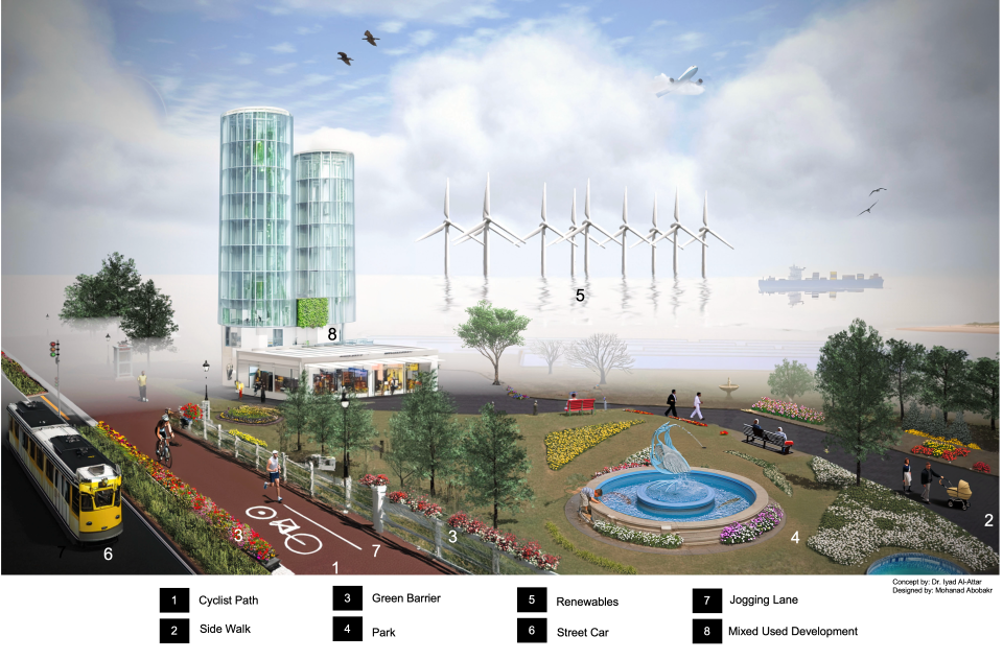It is incredible the extent to which the Covid-19 pandemic demonstrated how far indoor air quality (IAQ) in buildings has drifted to an ideology suggesting that clean and fresh air are luxuries for the elite and the lucky few. After the widespread negligence observed during the pandemic, we have come to recognize the importance of air quality and its impact on health and well-being. The pandemic is a tale of loss and failure, riddled with the arrogance of refusing to change and the ignorance that set humanity on a course of economic paralysis and defeat. The pandemic invaded our cities to find us so conditioned to focus solely on thermal comfort, even at the expense of neglecting the air quality we unwittingly chose for our respiratory systems. We have neither a choice nor a say in the quality of the air that we inhale, let alone inhaling in a densely occupied space what others exhale. We have undermined the sense and science of air quality monitoring, filter performance, and building design and settled for conventional over contemporary thinking.
As we continue to fall short of meeting and exceeding air quality targets, relying on maintenance tricks and shortcuts to save costs, our HVAC systems and human occupants become more vulnerable to contamination. We have sung the "energy efficiency" song more than we should have while barely adhering to energy targets, falling behind on our environmental commitments, and believing doing the minimum will eventually change the game.
Every city has its particular environment, requiring individual design tools to craft its urban status. Rapid urbanization adversely affects human health and strains infrastructures and lifestyles, particularly if forests are unsustainably replaced by concrete and asphalt. As the challenges of urban expansion compound, it is imperative to broaden the scope of sustainable urban development and transform existing cities into human-centric frameworks. Sole reliance on public policies without behavioral change cannot counter the pace of rapid urbanization and the consequential anthropogenic emissions from powering buildings, transport, and industries. If we plan to grow without polluting, we must embrace renewable energy, efficient waste management, clean industrial practices, and green manufacturing. While these measures represent a few steps toward a sustainable future, climate resilience and environmental justice must also be considered. Sustainable transportation is another critical parameter; when it offers safety, convenience, and connectivity, it becomes the order of the day.

In light of the challenges posed by rapid urbanization, broadening the scope of sustainable urban development and reinvigorating existing cities into hubs of well-being and economic vitality is imperative. The built environment should have as a priority the creation of spaces that promote clean air, health, and well-being while fostering cohesive, connected and economically vibrant communities. Protecting the health of inhabitants is not just a measure of success but must become the essence of all city dwellings. Therefore, urban health is a critical element among the well-being parameters, including physical, environmental, and social factors. Broadly speaking, well-being aims to meet basic needs, satisfying individuals and communities by maintaining good physical, mental, and social health. Ultimately, clustering people in a city and exposing them to escalated air pollution, heat, poor water quality, stress, and traffic cannot be tolerated. Living in sustainable cities with healthy building envelopes is correlated to the fitness of the indoor and urban environments; hence, the importance of air quality to the health and well-being of human occupants must be stressed.
Air quality cannot take a backseat when it comes to the health and well-being of building occupants. If neglecting IAQ is an attitude and enhancing it is agony, the policies are undoubtedly absent. Leaving everyone to their own devices and preferences subjects IAQ endeavors to a dissuasive fate. Quantifying the mortality and morbidity of exposure to poor air quality is essential to any realignment in policymaking, but we cannot wait until these rates rise before we can act. Furthermore, appropriate strategies such as non-financial measures and ethical obligations must be considered when improving indoor air quality. Still, there must be more for IAQ enhancement to gain political traction.
Tolerating IAQ deterioration signifies that delivering clean and fresh air was never a societal priority. Perhaps GK Chesterton was right when he said, "I do not believe in a fate that falls on men however they act; but I do believe in a fate that falls on them unless they act." We must refrain from flaunting our outdoor and indoor air quality obligations and succumbing to the conventional wisdom in building design that overlooks the air quality, the health, and the well-being of human occupants. Ultimately, placing people at the heart of the building design process and acknowledging their right to inhale air quality that would meet and exceed current global standards is essential in creating a culture of sustainability.
While we are not short of frameworks, we need more governance packed with appropriate incentives to enhance air quality sustainably. Today's advanced technologies and innovations in HVAC, filtration, and air quality monitoring can surpass users' expectations beyond what governments can manage and mitigate. Therefore, governments should stay up to speed and capitalize on the fullest potential of available technologies that reshape urban planning and design. Undoubtedly, we shape the environment around us – and that environment, in turn, shapes how we live, work, move, and grow.
Conclusion
It is time for policymakers to focus on building performance to efficiently meet their electricity demands, increase clarity on certification and regulation of air quality, and stimulate new infrastructure to place the well-being of human occupants at the forefront of building envelope priorities. We must rise above the status quo as we progress toward prosperity to ensure the future is anticipated and secured. Realizing the gaps between the conventional operations of buildings and the capabilities of technologies we possess today is critical to the overall success of our modern built environments. Leaders and decision-makers cannot be blinded by the rules and structures of the past and the traditional ways that left enough gaps for viruses to transmit, particles to settle, and molds to grow. The Covid-19 pandemic has forced us to scrutinize building standards since we were convinced by the claims of specialists that they had perfected the ventilation rates and filtration efficiencies, configurations, and formulations to halt virus transmission. We cannot afford to wait until the next pandemic to determine if the tweaked filtration and ventilation standards might pass the air quality exam. Broad, comprehensive, decisive air quality measures must be made and verified to forge a pandemic-proof built environment.
About the author
Dr Al-Attar is a mechanical engineer and an independent air filtration consultant. He is a Visiting Academic Fellow in the School of Aerospace, Transport, and Manufacturing at Cranfield University and is reading for an MSc in Sustainable Urban Development at the University of Oxford, UK.







